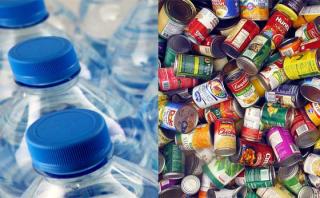Food and water safety tips

In the event of an emergency or disaster, access to food, water and electricity may be limited or scarce. Prepare for yourself and your family by storing emergency food and water supplies.
Food
During an emergency situation, it's important to take steps to ensure that the food you consume is safe to eat. Here are some food safety and storage tips to follow during and after an emergency:
1. Keep food at safe temperatures: Keep perishable foods such as meat, poultry, seafood, and dairy products refrigerated at a temperature below 40°F. If there is a power outage, try to keep the refrigerator and freezer doors closed as much as possible to maintain the cold temperature. Use a thermometer to check the temperature inside the refrigerator and freezer when power is restored.
2. Use food within recommended timeframes: Check the expiration dates on your food items, and use them within the recommended timeframe. If you are unsure whether a particular food is still safe to eat, use your senses to check for any unusual odors, colors, or textures.
3. Store food properly: Keep food stored in airtight containers or packaging to prevent contamination from pests and bacteria. Avoid storing food near chemicals, cleaning supplies, or other hazardous materials.
4. Use clean utensils and surfaces: During an emergency, it's important to use clean utensils and surfaces to prepare and handle food. Wash your hands frequently with soap and water, and use clean cutting boards, knives, and other utensils.
5. Cook food thoroughly: Cook all meat, poultry, seafood, and eggs to the proper temperature to kill any harmful bacteria. Use a meat thermometer to ensure that the internal temperature of cooked food reaches at least 165°F.
6. Use safe water: Use only safe, clean water for drinking, cooking, and cleaning. If you are unsure about the safety of your water supply, boil it for at least one minute before use.
7. Discard any questionable food: If you suspect that any food may be contaminated, discard it immediately. Don't take any chances with food safety, especially during an emergency situation.
8. Familiar foods are important and create a feeling of security in times of stress. Try to include foods that you and your family will enjoy and that are also high in calories and nutrition. Foods that require no refrigeration, water, special preparation, or cooking are best.
Find out more on how to keep food safe before, during, and after emergencies, such as floods, fires, natural disasters, or the loss of power by visiting Foodsafety.gov.
For more questions about food safety, contact the USDA’s Meat and Poultry Hotline at 1-888-MPHotline (1-888-674-6854) to talk to a food safety expert or chat live at ask.usda.gov from 10 a.m. to 6 p.m. Eastern Time, Monday through Friday.
Water
Water safety and storage are critical during an emergency. Here are some tips and resources to help you ensure that you have safe and clean drinking water before, during, and after an emergency:
Before ...
* Store enough water: It's recommended to store at least one gallon of water per person per day for at least three days. Store water in clean, airtight containers, and label them with the date they were filled.
* Rotate stored water: If you're storing water for an extended period, rotate it every six months to keep it fresh.
* Learn how to purify water: Learn how to purify water in case your stored water runs out. Some methods for purifying water include boiling, using water purification tablets, and using a water filter.
* Locate emergency water sources: Identify sources of water that you can access in an emergency, such as a nearby lake, river, or well.
During ...
* Use safe water sources: If your regular water supply is compromised, use your stored water or find a safe water source to use. Boil or treat any water from an unknown source before drinking it.
* Avoid contaminated water: Do not drink water that has a strange color, odor, or taste. Also, avoid water that may be contaminated by chemicals, sewage, or other hazardous materials.
* Collect and store rainwater: You can also collect rainwater during an emergency. Place a clean container outside to collect the rainwater.
After ...
* Check for safety: Check with your local authorities to see if your water supply is safe to drink. Listen to news reports and follow any instructions from local officials.
* Purify water: If your water supply is not safe, use a water purification method to make it safe for consumption.
* Dispose of contaminated water: If you suspect that any water may be contaminated, do not use it for any purpose. Dispose of it properly.
Resources for food and water safety/storage
Cornell Cooperative Extension of Ulster County- Food Safety & Emergency Resources
Centers for Disease Control and Prevention (CDC) - Emergency Water Supply Preparation
